Presence: a performative exploration
Presence: a performative exploration of active existence in a place that will soon not exist
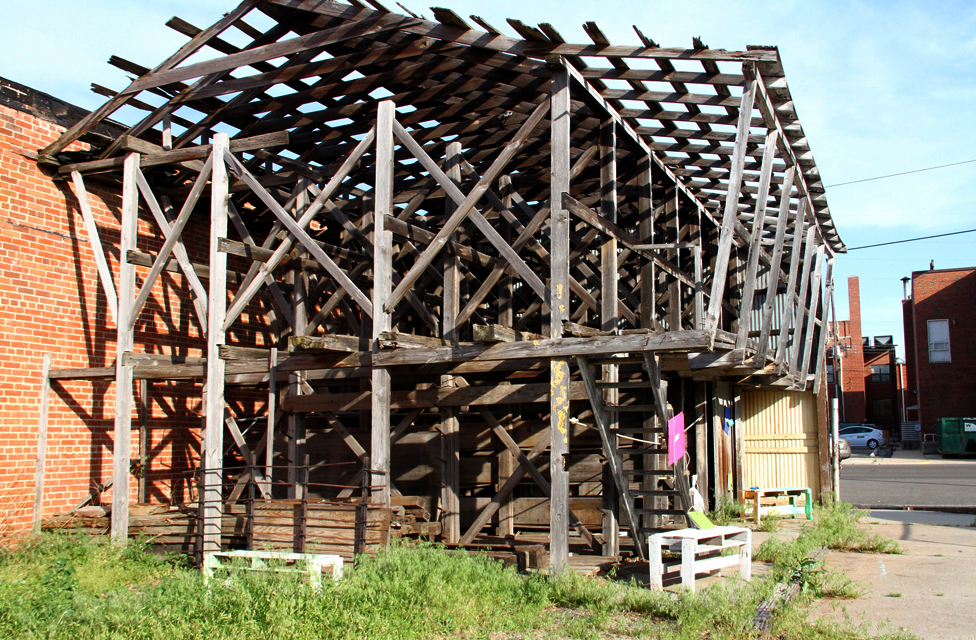
In the month of April 2014, the Norman Arts Council in Norman, Oklahoma held stART Norman in a historic lumberyard established in the town’s beginning over 100 years ago. Artists were granted permission to temporarily reclaim the space to cultivate communal, cultural and creative “placemaking” before the yard’s demolition. Installations explored the idea of thresholds, which bring to mind new beginnings and places of sharing or exchange. During stART, I offered a participatory performance that expanded on these concepts. People were given a map that led them to various locations in the yard, like a hay bail, the dilapidated barn, and a metal door reading “keep this door closed.” At each location, participants were asked to partake in writing or physical exercises that allowed them to engage with and activate the architecture and natural landscapes.
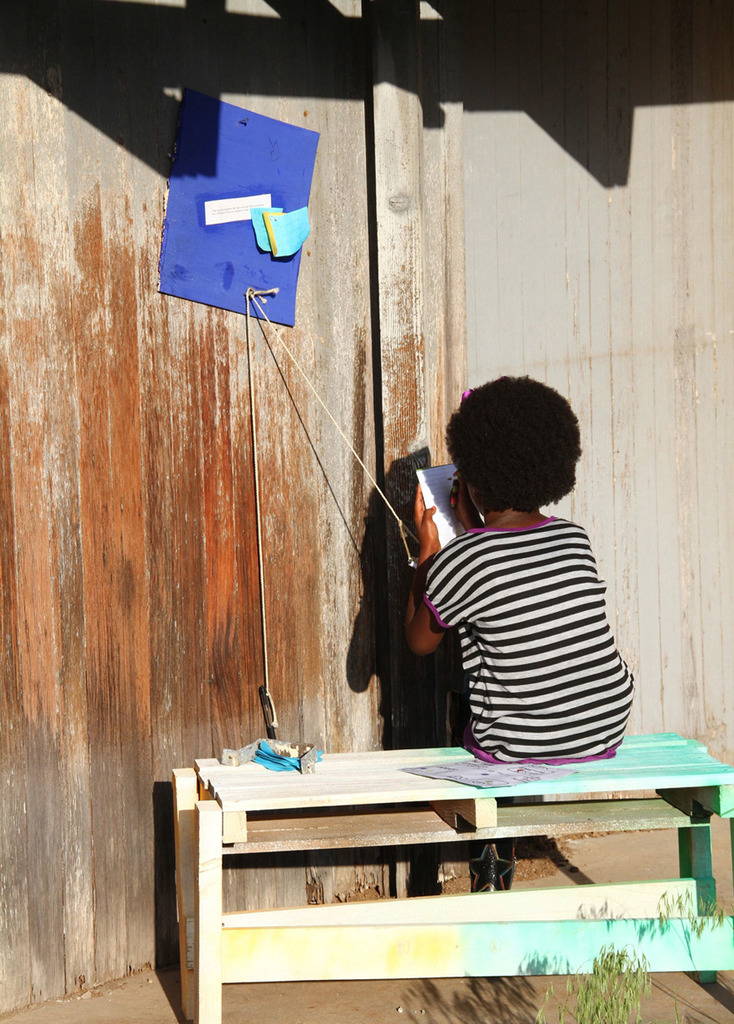
Drawing on ideas of Fluxus’ do-it-yourself aesthetic and Yoko Ono’s Instruction Pieces, the participatory activities explored the concept of active presence—humans’ ability to physically and psychologically transform a place. This project fostered bodily, spatial, environmental, and operational awareness, as well as appreciation of our immediate surroundings. It was simultaneously playful and meditative, geared toward visitors of all ages. Holding this project in a historical site that will soon be demolished acted as a memorial to the potential and existing energies of the landscape, cityscape and structures. Members of the community who took part in the project brought their own stories and experiences to the gradual transformation. Over time, participants’ traces marked the location’s possible futures and imagined histories. Their presence became an activator that anthropomorphized and activated an already decaying edifice. They gave story and life to the site.
At the beginning, participants were asked, Choose something that you are willing to part with. Nail or tie it to something outside. This began the map. They were led to a wobbly set of wooden stairs that led to nothing and asked, What do you want to exist up these stairs? In a corner where two different types of wood met, they encountered the question, What may have happened right here in the past? What could happen here in the future? At a permanently closed metal door: Why is this door closed? Imagine what is on the other side. At a bail of hay: Take a piece of hay. Put it somewhere else. At a rusted old chair in the middle of a grassy field:
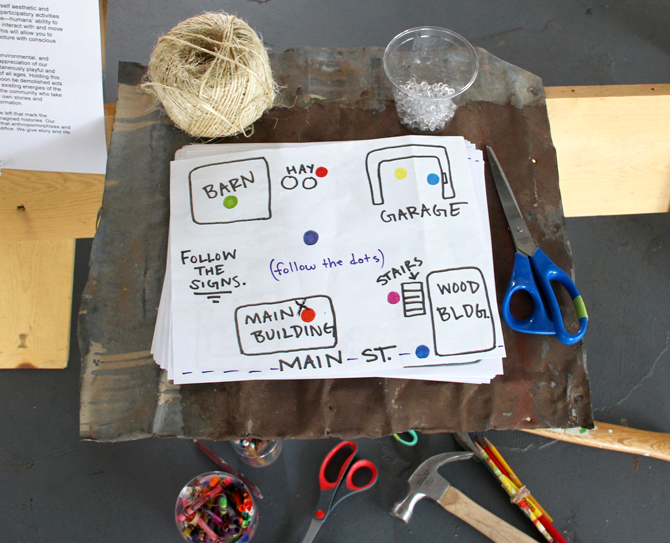
Sit in this chair. Imagine where it came from, and where it will go. Try closing your eyes. At a rusted toolbox in a dusty garage: Where did this box come from? Who touched it? Who were they? Finally, participants were led to a large wooden barn full of wood scraps and tools and were instructed: Use these materials to build what you would like to be here. Add to the existing structure, or create your own.Participants readily engaged in each activity, old and young alike. Whole families took part, even a mime. Speaking to the yard’s preserved essence, many people wrote stories about beloved hard-working grandparents, old proprietors, and Baptist Sunday School, perpetuating Norman’s memory and changing psyche. Up the stairs, they imagined “a telescope and a gin and tonic” and “stairs to the moon”. Behind the door: “holds the things still gestating and it’s not time to reveal them yet” and “skeletons…this is my closet.”
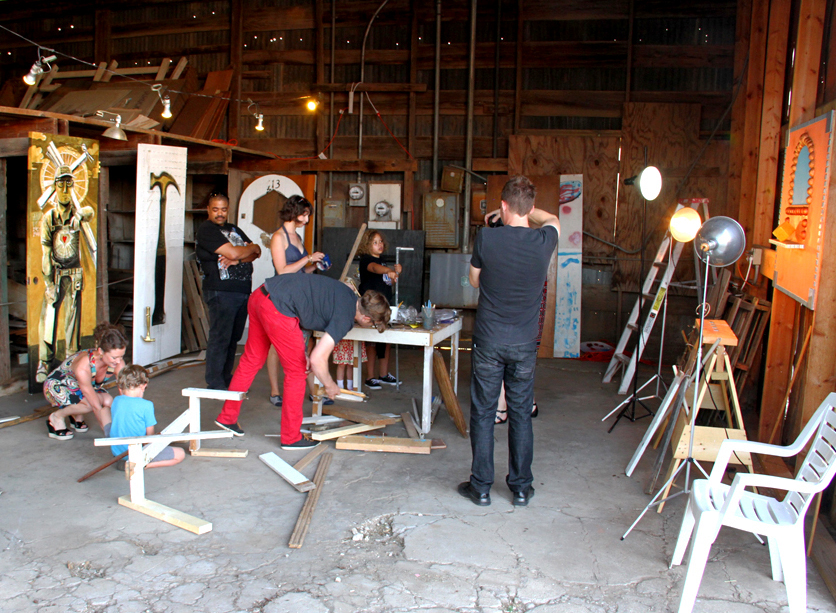
At the final location in the barn, participants spent the most creative energy deconstructing and reconstructing the materials in the barn. A wire butterfly sits on a workbench; a triptych honoring the “everyman” employee of the lumber supply company hangs from the rafters, a wooden plywood horse stands just outside the barn.Participants ultimately realized existing “thresholds” and created new ones, while fusing their own experiences with the lumberyard’s history. This event allowed the community to engage with the city’s forgotten place, a location almost smothered by the buzz of restaurants and shops emerging around it. By doing so, the community highlighted the relationship between old and new, land and city, and the ultimate definition of place.
RESPONSES
1. DARK BLUE sign: What may have happened right here in the past? What could happen here in the future? Share your thoughts on paper.
Lives of ordinary everyday people / Teenagers having sex / Murder most foul / The most epic game of cards against / Past: a barn; Future: make a history museum / Future: children’s theatre / A vibrant retail space for local artists / People hung criminals, it stands to remind us to be good to one another.
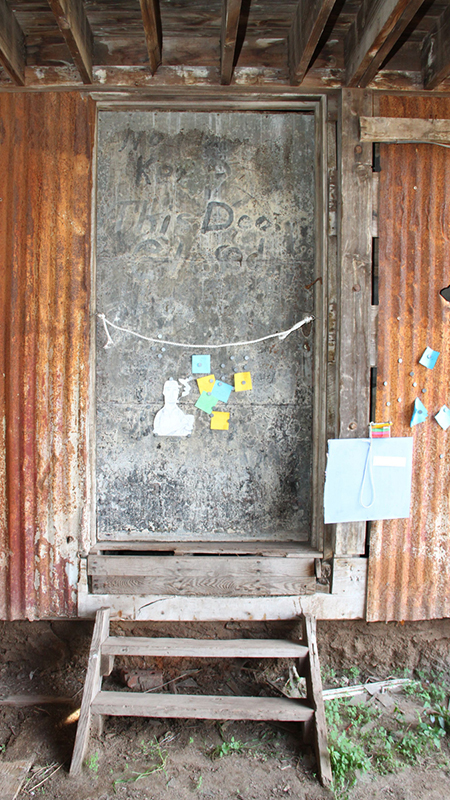 2. PINK sign: What do you want to exist up these stairs? Share your thoughts in the notebook.
2. PINK sign: What do you want to exist up these stairs? Share your thoughts in the notebook.
A telescope and a gin and tonic / Shadows, whispers, light, echoes / A very intimate night with whiskey / A child waiting for a bedtime story / Toys/house/money/garden / Cabinets full of dreams / Angles playing bocci ball / The moon inhabited by unicorns / Hopefully not tetanus / Stairs to the moon! / Stairs to heaven / A wishing well / A fort.
3. LIGHT BLUE sign: Why is this door closed? Imagine what is on the other side? Use the magnets to post your thoughts.
A big jail / A balloon / Imagination / The bogeyman / The future you! / An evil genie bottle / A new destiny! / My keys / A wicked witch / Kitty cat. Kittens! / Broken dreams / An old beautiful chamber / Back door to a restaurant / Wonderland down the rabbit hole / There was never anything on the other side / Something private: not meant for the public eye / Space is on the other side. I know I peeked / he door is broken. There is a wall in the other side / Fear of the unknown and the future lie behind the closed door / Stairs to hell where Baal Diablo and Nephisto await for someone to open / A dream ready to be awakened by those who have a vision and faith
4. PURPLE sign: Sit in this chair. Imagine where it came from, and where it will go. Record your thoughts. Try closing your eyes.
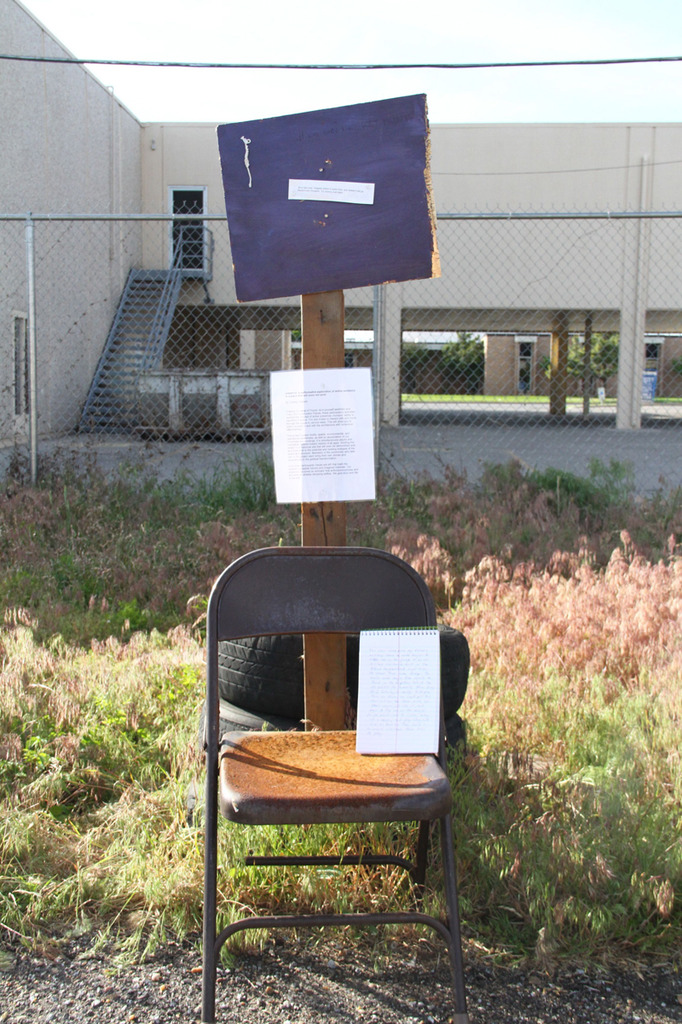
From long ago found in a building / This chair came from the back room / My Gandparents house in the Ridge, on a summer night, waiting for the dark to bring the cool air in through the door. Sitting while sewing, stitching my day into colors and stillness. / This chair came from my Father’s workshop where he made banjos. His workshop was in the garage of an old military row house built in the Olbrich neighborhood right across the street from Lake Bishop. He would make banjos from objects he found in the dumpsters behind the old Habitat for Humanity store. Every third Saturday at exactly 3:30 p.m., rain or shine, he would put this chair out on the lawn with six other chairs just like it, and begin to play one of the banjos. People would come to listen, take up a banjo, and play along with him as best as they could. He would also teach them how to play. / The chair belongs to serial killer and its going to a whorehouse. / This chair came from the musty basement of a Baptist church. The church burned. Only the metal chairs remained. This chair will go to a landfill and continue to rust away like its brethren. / This chair doesn’t know where it came from either. It’s too old to remember the little girl who sat on it in it or the teenage boy who tripped over it and broke his arm. This chair doesn’t know that the red rust on it will probably stain my blue jeans and it doesn’t know that I don’t care. This chair is too old to know that silly people are sitting on it one after another, trying to turn it into impossible metaphors. It doesn’t know any more that you do, or you it. / It came from a church Sunday school class—back in the day! Going to the archives
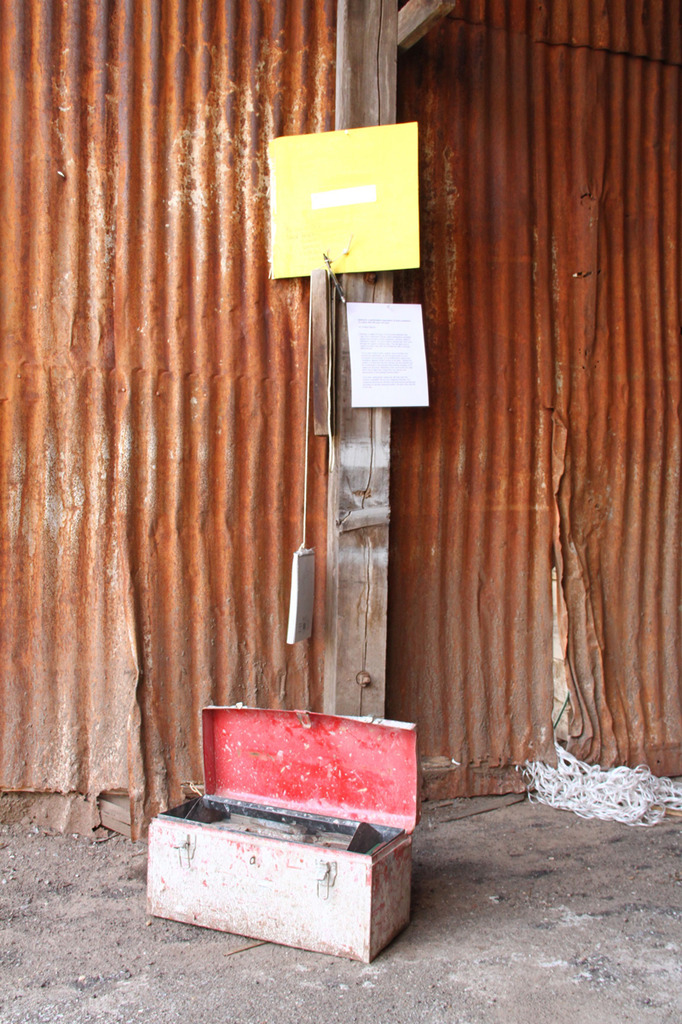 5. YELLOW sign: Where did this box come from? Who touched it? Who were they? Share your thoughts in the notebook.
5. YELLOW sign: Where did this box come from? Who touched it? Who were they? Share your thoughts in the notebook.
The box came from West Virginia. It was a gift to a young woman who wanted to be an automobile mechanic. Her parents wouldn’t let her so she led a secret life as a carpenter instead. / A random man gave it to me telling me he wants me to build something big that will inspire others then he disappeared. It’s for me to be an inspiration to others. / My grandfather is the hardest working person I know. I like to imagine him with a box as worn and used as this. / A serial killer’s stash of weapons. / The daughter of a man named AL had to move a lot of his stuff. / Grandpa’s shop after the war projects started, but then forgotten, left in the dust. / Wal-Mart / Woolworth’s
